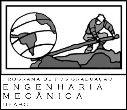Banca de QUALIFICAÇÃO: RAPHAEL PAULINO GONÇALVES
Uma banca de QUALIFICAÇÃO de MESTRADO foi cadastrada pelo programa.DISCENTE : RAPHAEL PAULINO GONÇALVES
DATA : 25/11/2021
HORA: 14:00
LOCAL: por participação remota
TÍTULO:
Simplification of Complex Time-Domain Loads for the Frequency-Domain in Fatigue Structure Analysis
PÁGINAS: 60
GRANDE ÁREA: Engenharias
ÁREA: Engenharia Mecânica
SUBÁREA: Mecânica dos Sólidos
ESPECIALIDADE: Análise de Tensões
RESUMO:
The time domain is the most widely chosen alternative in mechanical fatigue tests to completely represent random events across multiple simultaneous channels, such as an interaction between vehicle suspension and the ground. The reason for this is the possibility of a complete reproduction of these physical events on a test bench, without any additional math, simplification and / or post-processing. That is, the load / displacement input set obtained in the field test is the same as that performed in laboratory test equipment. Using a vehicle as an example, the test configuration works as follows: The regions of the structure to be studied are equipped with signal acquisition devices such as strain gauges and the vehicle travels over a track, this is called an event. If this event has a duration of X, from 0 to X all variations of deformations / stresses due to the acquisition devices are known, this is known as a history of stresses / deformations. The bench test hardware then induces loads / displacements in the vehicle's wheels in order to reproduce the same deformations / stresses recorded during the course of the track, this is called the load / displacement history. With the load / displacement history determined for an event, the bench test can replicate this same event several times, since the vehicle travels several laps on the track, allowing to observe the fatigue performance of the studied region. The main disadvantage of this approach is the long test duration and the high cost of the equipment. The hardware required for these tests is complex, composed of servo actuators, in order to incite a certain amount of charge in a window of time. The time required to complete the test is also long, as it consists of the same duration of the test multiplied by the number of repetitions to achieve fatigue performance. Frequency fatigue bench tests, on the other hand, are potential alternatives to overcome these disadvantages. That is, they require less sophisticated equipment, since they require only simple actuators instead of servo actuators and the test duration is reduced, as the total length of the event is replaced by constant repetitions and constant damage. This work explores a new method that uses the result of structural fatigue as a starting point and, through the solution of an inverse problem, it is possible to determine which loads / displacements caused them in the frequency domain. The objective is to assist future developments in fatigue tests, supplanting tests in the time domain without losing the correlation with physical events.
MEMBROS DA BANCA:
Presidente - Interno ao Programa - 1604134 - CICERO RIBEIRO DE LIMA
Membro Titular - Examinador(a) Interno ao Programa - 3042266 - WALLACE GUSMAO FERREIRA
Membro Titular - Examinador(a) Externo ao Programa - 1544284 - LUIS ALBERTO MARTINEZ RIASCOS
Membro Suplente - Examinador(a) Externo ao Programa - 1763423 - WESLEY GOIS




